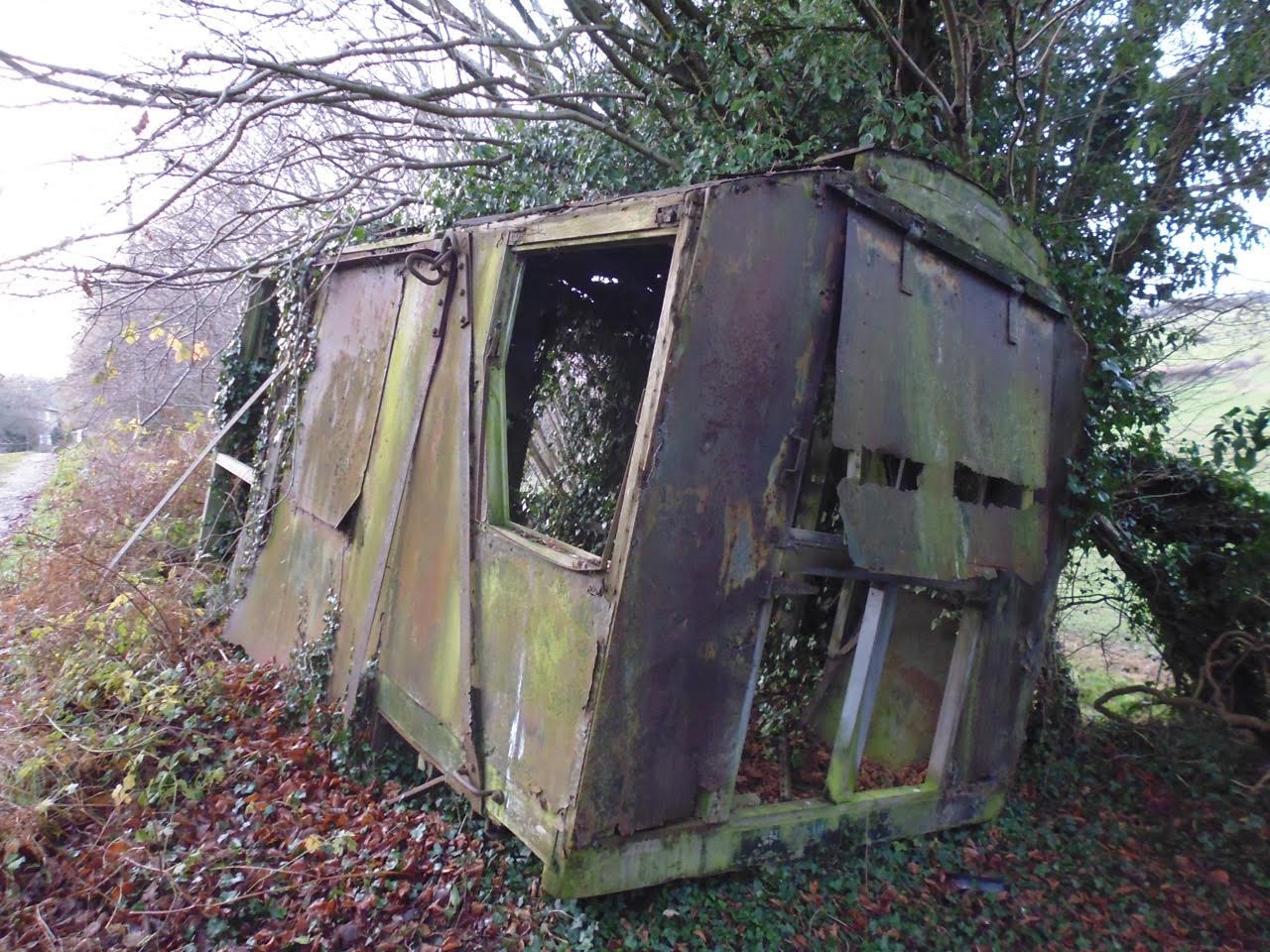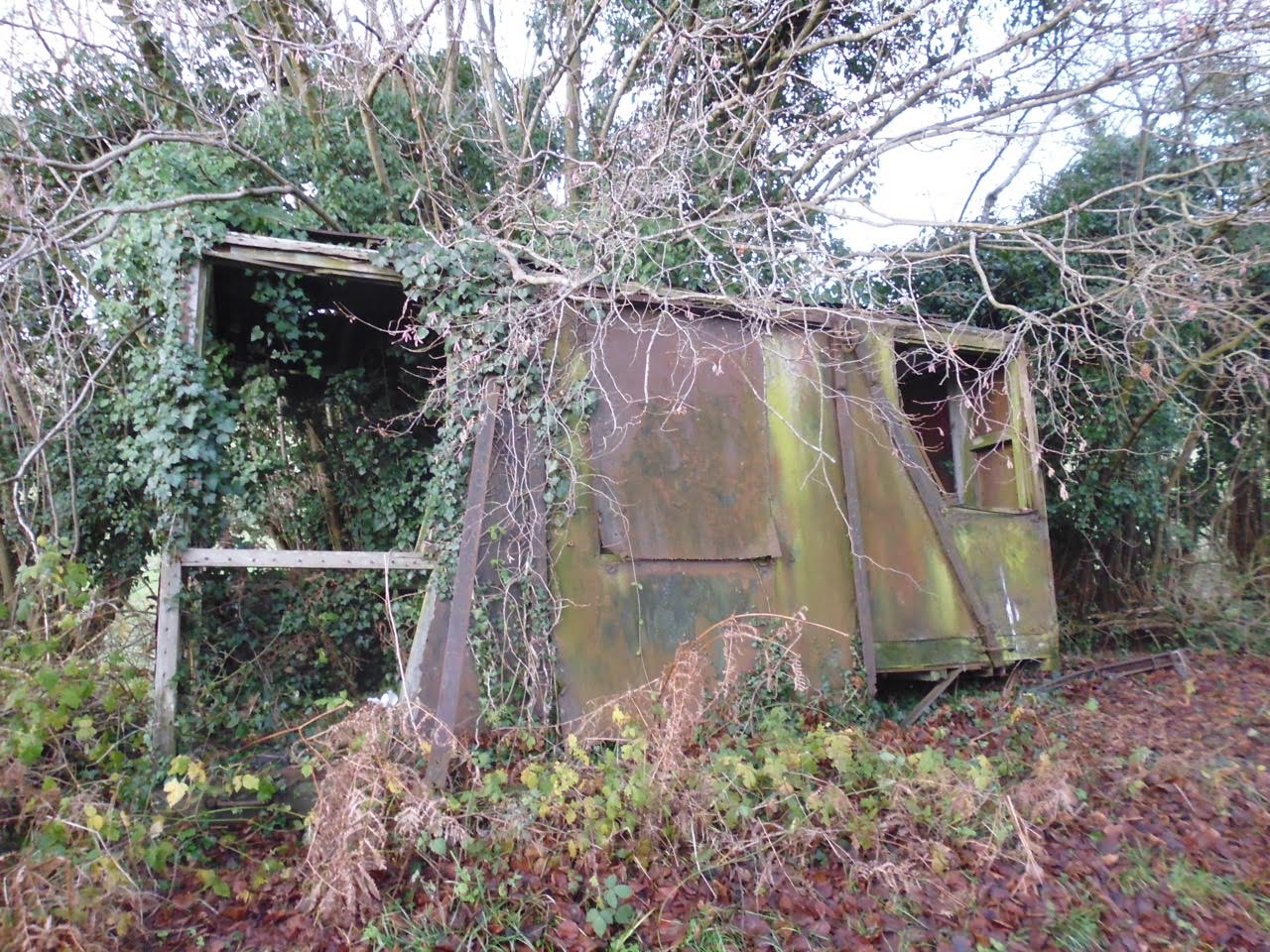- Stay Connected
 Abraham Lincoln
If given the truth, the people can be depended upon to meet any national crisis...
Abraham Lincoln
If given the truth, the people can be depended upon to meet any national crisis...
 Guildford news...
for Guildford people, brought to you by Guildford reporters - Guildford's own news service
Guildford news...
for Guildford people, brought to you by Guildford reporters - Guildford's own news service
Rotten Old Railway Goods Van – Who Can Supply Some Details?
Published on: 15 Jan, 2017
Updated on: 15 Jan, 2017
By Martin Giles
Calling all railway enthusiasts and local agricultural historians!
While out walking on the North Downs Way (or Pilgrims’ Way, whichever you prefer) I once again pondered the history of this old railway goods van.
It is fast rotting away, especially as its frame is only wooden. So before it disappears I thought it might be interesting to glean our readers’ thoughts as to its history.
In a fascinating book called The Railways – Nation, Network & People, (Profile Books, 2016) author Simon Bradley writes about the fate of goods vans and old carriages ending up in the countryside on static duties. He writes: “One did duty for some years as a bothy, two thirds of the way along the punishing final stage of the Pennine Way, its only cargo an unappealing stash of dried emergency foodstuffs left behind by walkers about to re-enter the domain of real food. Van bodies have even made it to the rail-less Scottish islands, that empire of outdoor abandonment; one may be seen peacefully disintegrating by the roadside on Hoy, southernmost of the Orkneys. This example came from a standard Southern Railway van, built probably at Ashford in Kent, where many of the Dungeness carriage bodies also originated.”

Redundant railway goods vans, minus of their wheels, were once a common sight being used on farms for storage and so on. There are not so many around as there used to be, say 10 or 20 years ago.
It would be interesting if readers could help with not only the railway history of the van, what type is it, where and when was it used, and so on. But also any information about its precise use on Piccards Farm.
Please leave a reply in the box below.














John Lomas
January 15, 2017 at 10:58 pm
This may be a red herring, but I think the large metal ring and the associated braces at the edge of the roof point to it being a de-mountable van body.
It is possible that largish metal parts such as this might have part numbers or even company IDs on them.
Vans might well have been moved around the country a great deal and if not withdrawn until well into BR days might not be local to the area where found.
Mike Melbourne
January 16, 2017 at 9:21 am
The wagon group on The Mid Hants Railway based at Medstead may be able to help.
Frank Phillipson
January 17, 2017 at 3:11 am
I believe John Lomas is right in that the shackles at the roof level would be for lifting what was termed as a container (not the modern box type) onto a flat bed road trailer or a flat bed railway wagon. This type of container were used for a variety of purposes from circa 1900 to the mid 1960’s, one use being to provide a furniture removal service.
See: – http://myweb.tiscali.co.uk/gansg/5-unit/unitload1.htm
See an illustration at: – http://www.nrm.org.uk/ourcollection/photo?group=Liverpool%20Street&objid=1995-7233_LIVST_RF_341&keywords=container
From the condition of the body it is difficult to see what is original and what has been added or dropped off! The sides appear to be steel sheet over a wooden frame. The steel sheets may have originally been over a wooden planked body which has now rotted away. Alternatively the steel sheets may have been added later once the wood planking (if any) had started to deteriorate.
On the crest of the curved roof (end view) there is a raised portion which appears to form a “clerestory” or ventilation strip running along the whole roof (unusual for a British goods van). This seems to be backed up by lightening the interior photo of the wagon which then reveals circular holes in the underside of the roof leading up into this “clerestory” strip (unless they are for some form of lighting but which I doubt). Such ventilated vans would be used for perishable goods such as fish, butter, etc.
See illustration: – https://basilicafields.files.wordpress.com/2011/09/16ft_lard_butter.jpg
And: –
http://www.alextrack.co.uk/library/images/model_railways/2mm_finescale/non_passenger_carrying_coaching_stock/fish_vans_gwr_s13/fish_vans_gwr_s13_01_xlarge.jpg
It is just possible that the wagon is of European design, say for fish, and that the whole wagon including the wheeled underframe was unloaded from a ship onto the British railway system?
Bob McShee
January 17, 2017 at 9:45 am
John Lomas is correct in saying that without the metal frame,which usually had a makers plate,it would be impossible to identify the van.
I don’t think that the Mid-Hants wagon group would be interested as the cost of transportation would be expensive.
I would be happy to accompany the editor to view the van to see if there are any clues to ascertain its identity.
Thank you Bob, good idea. Ed.